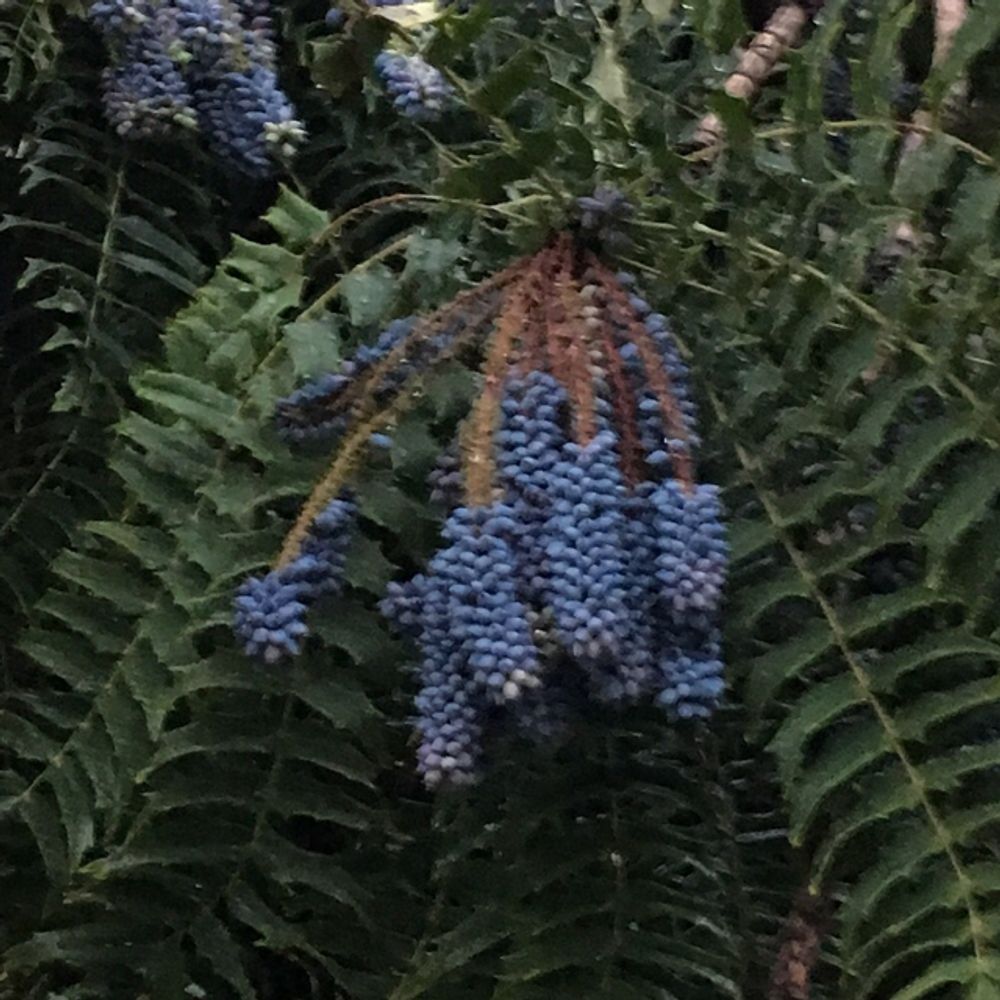Oregon grape
(Mahonia aquifolium)

Description
Mahonia aquifolium, also known as Oregon grape or holly-leaved barberry, is a species of flowering plant in the family Berberidaceae. Native to western North America, it is a popular ornamental plant for its attractive foliage, yellow flowers, and edible berries. In this article, we will delve into the many fascinating aspects of this plant, from its appearance and habitat to its uses in medicine and cooking. Description Mahonia aquifolium is an evergreen shrub that typically grows to a height of 1-2 meters, although it can sometimes reach up to 3 meters in ideal conditions. It has an upright, spreading habit and is densely branched, with multiple stems arising from a woody base. The leaves are leathery, dark green, and spiny, with 5-9 leaflets that are shiny on the upper surface and dull on the lower surface. The leaflets are sharply toothed and have a holly-like appearance, which is where the plant gets its common name "holly-leaved barberry." In late winter and early spring, Mahonia aquifolium produces clusters of bright yellow flowers at the tips of its branches. The flowers are small and star-shaped, with six petals and six stamens. They are followed by dark blue-purple berries that ripen in late summer and fall. The berries are edible and have a tart, slightly sweet flavor that is often compared to that of cranberries. Habitat and Range Mahonia aquifolium is native to western North America, where it can be found growing in a variety of habitats, including open woods, forests, and mountain slopes. It is particularly common in the Pacific Northwest, where it is often found growing in dense thickets in the understory of coniferous forests. The plant is tolerant of a wide range of soil types and can grow in both acidic and alkaline soils. It prefers well-drained soils that are rich in organic matter, but can also grow in poor, rocky soils. Uses Mahonia aquifolium has a long history of use by indigenous peoples of western North America, who valued it for its medicinal and culinary properties. The berries were eaten fresh or dried and used to make jams, jellies, and syrups. The roots, bark, and leaves were used to treat a variety of ailments, including skin infections, stomach problems, and eye infections. Today, Mahonia aquifolium is still used in traditional medicine and is also widely cultivated as an ornamental plant. Its berries are used in the production of natural dyes, and its wood is sometimes used for woodworking. Medicinal Properties Mahonia aquifolium contains a number of bioactive compounds that are thought to be responsible for its medicinal properties. These include berberine, a potent antimicrobial and anti-inflammatory agent, and isoquinoline alkaloids, which have been shown to have antitumor and antiviral activity. Research has shown that Mahonia aquifolium may have a number of health benefits, including: Improving digestive health: Mahonia aquifolium has been shown to stimulate the production of digestive enzymes and improve nutrient absorption, making it useful for treating digestive disorders like irritable bowel syndrome (IBS) and Crohn's disease. Reducing inflammation: Mahonia aquifolium contains compounds that have been shown to have anti-inflammatory effects, making it potentially useful for treating conditions like rheumatoid arthritis and inflammatory bowel disease (IBD). Supporting immune function: Berberine, one of the key compounds found in Mahonia aquifolium, has been shown to have immune-modulating properties, which may help boost immune function and protect against infections.
Taxonomic tree:







